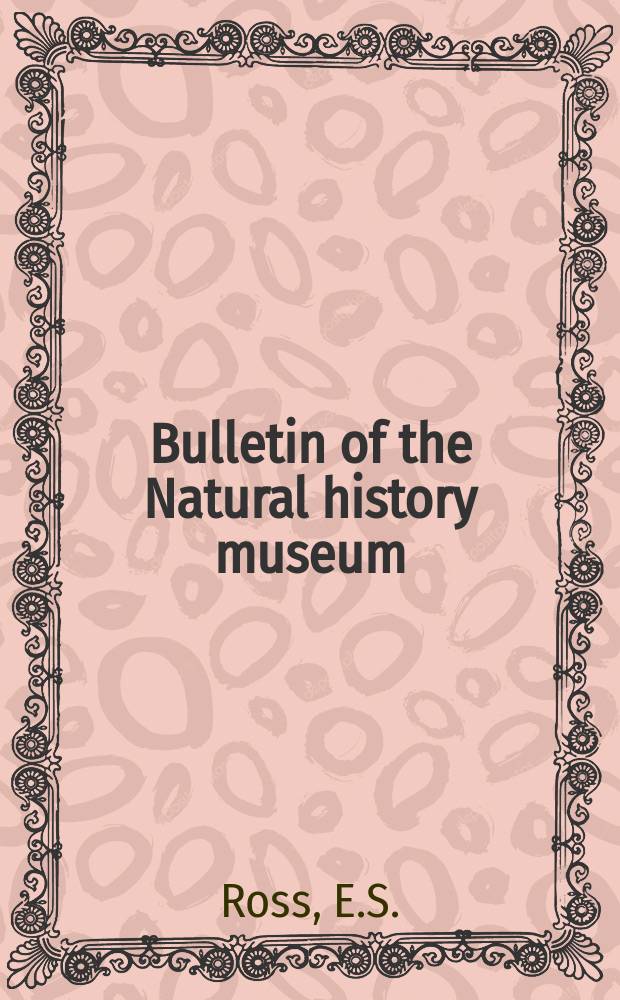Science Bulletins: Impact! Tracking Near-Earth Asteroids
Collisions between space objects are a vital part of the evolution of our Solar System. Most of Earth's impact craters have been wiped away due to plate tectonics ...
American Museum of Natural History
Science Bulletins: Rarest Whale on Earth Identified in New Zealand
Approximately 78 species of whales inhabit the ocean, but a number of these species remain elusive. Beaked whales are deep-sea feeders that surface briefly ...
American Museum of Natural History
Science Bulletins: Potato Biodiversity—Ensuring the Future
Farmers in the Andes use biodiversity as insurance. The potato, a plant native to the area that is now the world's fourth most important staple crop, is still locally ...
American Museum of Natural History
Science Bulletins: Archived in Ice—Rescuing the Climate Record
Follow scientist-adventurer Lonnie Thompson to the 5670-meter-high Quelccaya ice cap in the Peruvian Andes. Thompson and his team from Ohio State ...
American Museum of Natural History
Science Bulletins: Curiosity Rover Heads for Mars
The biggest and most technically advanced rover to date is on its way to Mars. In the latest Astro Bulletin from the Museum's Science Bulletins program, follow ...
American Museum of Natural History
Discovery of the ozone hole | Natural History Museum
Jonathan Shanklin, Meteorologist at the British Antarctic Survey, was one of the team that discovered the ozone hole in 1985. In this video, Jonathan reveals ...
Natural History Museum
Science Bulletins: Miniature Human Brains Grow in a Lab
Cultivated from stem cells, lab-grown "mini-brains" structurally resemble human brains, with distinct layers and regions. While these models aren't perfect ...
American Museum of Natural History
Science Bulletins: New Fossils Recast Tyrannosaur Evolution
Fossils of two never-before-seen species of tyrannosaur are overturning long-held ideas about the diversity and evolution of this family of dinosaurs. One is an ...
American Museum of Natural History
Science Bulletins: The Hunt for Planet X
A large, unseen planet may be lurking in the cold, dim reaches of our solar system. Using a combination of theory and observation, scientists have estimated the ...
American Museum of Natural History
Science Bulletins: On Shaky Ground—Building a Safer Future in Haiti
In November 2010, ten months after a magnitude 7.0 earthquake flattened huge sections of Port-au-Prince, Haiti, a team of geologists commissioned by the ...
American Museum of Natural History
Science Bulletins: SOFIA—Stars and the Space Between
By sending an infrared telescope to altitudes of 12000 meters (40000 feet) and higher, NASA and the German Aerospace Center (DLR) conduct astronomical ...
American Museum of Natural History
Science Bulletins: Egg Patterns Identify Intruders
When cuckoos lay eggs in other birds' nests, they produce eggs similar in color and pattern to the hosts' own. With the help of a new computer program, ...
American Museum of Natural History
Science Bulletins: MESSENGER Mission to Mercury
The MESSENGER orbiter's January 2008 flyby of the planet Mercury was historic. The last time a spacecraft visited was 1975, and it only mapped half the planet.
American Museum of Natural History
Science Bulletins: Chemical Defense Aids "Crazy Ant" Invasion
Invasive fire ants are firmly established in the southeastern United States, defending their territory with venomous stings. But a new invasive species, the tawny ...
American Museum of Natural History
Science Bulletins: Declining Sea Ice Affects Caribou
Disappearing sea ice and a warming Arctic are changing the growth cycle for plants that nourish Greenland's migrating caribou. Breeding caribou migrate when ...
American Museum of Natural History
Science Bulletins: Mangroves: The Roots of the Sea
There aren't too many happy stories when it comes to restoring damaged ecosystems, but people in southern Thailand's Trang Province tell one of them, thanks ...
American Museum of Natural History
Science Bulletins: Tapping In—The Promise of Brain-Computer Interface
For decades, neuroscientists have sought to use electronics to communicate with the brain. Computing and surgical technique have now become sophisticated ...
American Museum of Natural History
Science Bulletins: Earliest Human Artifacts in Eastern Europe
Scientists have dated a set of unique artifacts found in Kostenki, Russia to 45000 years old—the earliest trace of modern humans in that region. They help clarify ...
American Museum of Natural History
Science Bulletins: Jupiter's Shrinking Storm
Jupiter is a planet of extremes—it's the biggest in our solar system, it spins the fastest, it hosts the most moons, and it has the most turbulent atmosphere. But one ...
American Museum of Natural History
Science Bulletins: WISE Focus on Infinity
On September 30, 2010, a NASA space telescope called the Wide-field Infrared Survey Explorer, or WISE, completed its sweeping goal: to record observations ...
American Museum of Natural History
Science Bulletins: Thinking in Symbols
Modern human culture underwent a "creative explosion" in Ice Age Europe 40000 to 10000 years ago. The evidence, which ranges from fantastic cave paintings ...
American Museum of Natural History
Science Bulletins: Cosmic Microwave Background—The New Cosmology
The Cosmic Microwave Background (CMB) is a vast curtain of energy left over from the Big Bang. It is the oldest, most distant feature of the observable Universe.
American Museum of Natural History
Science Bulletins: Hubble Space Telescope—25 Years and Counting
Few of NASA's telescopes have captured the public imagination like Hubble, with its spectacular views of distant galaxies, supernovas, and nebulas. The first ...
American Museum of Natural History
Science Bulletins: Brown Dwarfs—Tail End of the Stars
Journey to the heights of Mauna Kea in Hawaii where astronomers search for brown dwarfs, cosmic bodies that are not quite stars and not quite planets.
American Museum of Natural History
Science Bulletins: Sunken Remains Illuminate Native American Lineage
In an underwater cave in the Yucatán, divers discovered a near-complete human skeleton dating to the first wave of migration to North America. DNA evidence ...
American Museum of Natural History
Science Bulletins: Chernobyl's Birds Adapt to Radiation
The Chernobyl nuclear disaster had a high ecological cost, with local wildlife suffering from physical deformities and reduced populations. The site has since ...
American Museum of Natural History
Science Bulletins: Cocaine's Tug-of-War in the Brain
Scientists from the Mount Sinai School of Medicine are probing neurons in the brain's reward center to learn why cocaine can be so addictive. A recent study ...
American Museum of Natural History
Colour and Vision: 'A mind-expanding peepshow of nature' | Natural History Museum
Discover how the entwined histories of colour and vision have filled the natural world with the vibrant hues and shades we see today: ...
Natural History Museum
Science Bulletins: WISE to Scan the Infrared Sky
NASA's latest space telescope-the Wide Field Infrared Explorer, or WISE-recently took its first images of the sky around Earth in infrared light. In its initial ...
American Museum of Natural History
Science Bulletins: Stem Cells—Developing New Cures
Although stem cells hold promise as direct therapy for human diseases, many researchers are even more enthusiastic about the opportunity to use stem cells to ...
American Museum of Natural History
Science Bulletins: Reading the Rocks—The Search for Oil in ANWR
In 1980 an act of Congress set aside nearly 20 million acres of Alaska's North Slope tundra to create the Arctic National Wildlife Refuge (ANWR). Less than 100 ...
American Museum of Natural History
Science Bulletins: New Horizons Brings Pluto Into Focus
Tiny, faraway Pluto was first spied in 1930. This icy world is one of thousands of rocky bodies that make up the Kuiper Belt, a ring that circles our solar system ...
American Museum of Natural History
Science Bulletins: Beyond Our Solar System—Searching for Extrasolar Planets
Astrophysicists are discovering new extrasolar planets—those outside our Solar System—almost daily. NASA's Spitzer Space Telescope (originally called SIRTF ...
American Museum of Natural History
Science Bulletins: Super Corals—For the Future (1 of 3)
Marine biologists in Hawaii investigate so-called “super corals,” which thrive even as ocean temperatures rise. In For the Future, learn how corals create ...
American Museum of Natural History
The Cannibals of Gough's Cave | Natural History Museum
A human bone engraved with zigzag marks reveals the people living in Gough's Cave in southwest England 14700 years ago were practicing cannibalism as ...
Natural History Museum
Science Bulletins: In Search of Wild Variety
To help build the catalog of life, biologists at AMNH search the globe for species that have never been scientifically described. Discover seven of these new ...
American Museum of Natural History
Science Bulletins: Lemurs of Madagascar—Surviving on an Island of Change
On the world's fourth largest island, and virtually nowhere else, lives an entire "infraorder" of primates: the three dozen or so lemur species. But Madagascar has ...
American Museum of Natural History
Science Bulletins: Protecting Wildlife in a Changing Climate
As the global climate changes, wild animals are shifting where they live—even beyond the protected areas that are crucial to their survival. This visualization ...
American Museum of Natural History
Science Bulletins: Rare Skull Sparks Debate About Our Ancient Relatives
An Asian dig site has yielded fossils of some of our earliest ancestors found outside of Africa. When scientists unearthed five skulls dating to the same period, ...
American Museum of Natural History
Science Bulletins: Ozone's Slow Recovery
Every September and October, a "hole" of varying size emerges in Earth's ozone layer over Antarctica, an effect of a buildup of ozone-depleting human-made ...
American Museum of Natural History
Science Bulletins: Cassini-Huygens Explores Saturn
After a seven-year trip, the Cassini spacecraft arrived at Saturn in July 2004. Since then, Cassini has been capturing never-before-seen imagery of the ringed ...
American Museum of Natural History
Science Bulletins: Underwater Microscope Zooms in on Tiny Marine Life
Most plankton are too small to be seen with the naked eye. But despite their size, they are vital in marine and freshwater ecosystems, serving as food for larger ...
American Museum of Natural History


























































